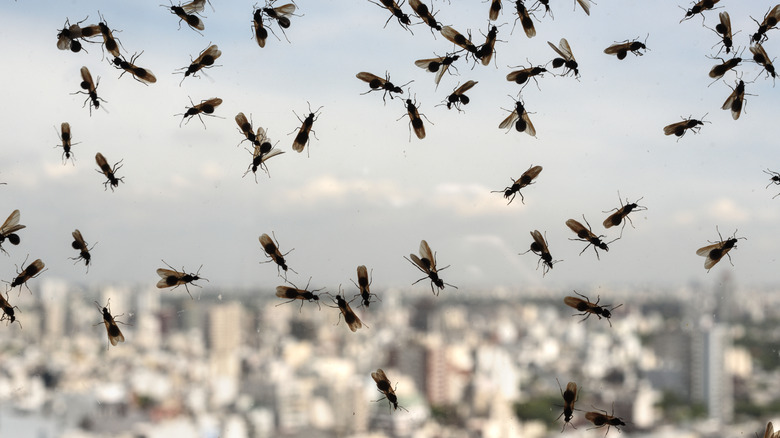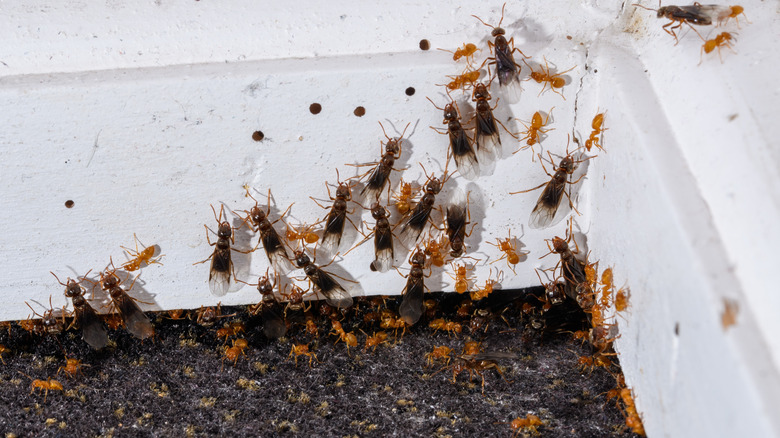What Does A Swarm Of Flying Ants Mean For Your Home?
We may receive a commission on purchases made from links.
A sudden swarm of flying ants around your property doesn't necessarily mean you have an infestation. These swarms typically signal a natural reproductive event called "nuptial flight." The winged ants are males and females born solely to mate and start new nests. This usually occurs during humid weather around July and August when conditions are ideal for their journey. While it may be alarming to see, most of these swarming ants won't survive to establish new colonies in your home. Males die shortly after mating, and only a small percentage of fertilized queens successfully find new nests. However, their presence does show that there are some active ant colonies nearby, potentially in your yard.
The appearance of flying ants could also be confused for termite swarms, which can look similar and are much more of an actual problem. Flying ants have distinctly elbowed antennae, pinched waists, and two pairs of wings, one usually being bigger than the other. Termites have straight antennae, thicker waists, and two sets of wings of the same size. This difference matters because a termite swarm is much more of a threat to your home than ants. However, if you consistently see multiple swarms of ants around your property, both inside and outside, and this occurs every year, you may still have a pest infestation. Although there are DIY ways to get rid of ants you might need help from professional exterminators. These swarms last only a few hours or up to a few days before the ants disperse, and they don't typically indicate an emergency situation that needs immediate extermination.
When flying ant swarms become a problem and what to do
While most flying ant swarms are harmless natural events, there are some situations that you should look out for. If you see winged ants coming out of your walls or from your home's foundation, this likely indicates that you have an established indoor colony that needs attention. Similarly, if the swarms recur year after year in the same area around your home, there is most likely a colony nearby, and you may need to employ some sneaky tricks to take care of these ant nests. After you spot a swarm, watch for any increased ant activity along your baseboards or near any food sources, which could signal a successfully established new colony.
Your response should really depend on the situation. If it's a one-time outdoor swarm, patience is the best bet as the ants will naturally disperse, and that should be the end of it. You can always get ahead of future issues by sealing any exterior cracks or repairing damaged wood around your property. However, if you see a swarm indoors, it's best to take some action. Squishing ants in your home is actually a big mistake, so instead, vacuum up any visible ants and dispose of the bag outside. Buy some ant bait and place it near active areas, and consider hiring a professional exterminator if the problem persists.
There is also a good side to the annual ant swarms, as they provide food to birds and other predators, so a random swarm outside can help support your backyard ecosystem. Being able to distinguish the difference between a natural nuptial event and a problematic infestation that needs your attention is the best way to help protect your home, and the environment.

